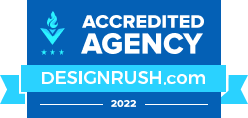Content optimization is often seen as an SEO task, but in reality, it has a greater purpose than just optimizing content for SEO. With search engine algorithms getting smarter, optimizing content for search engines is not enough.
For small agencies, content optimization can be a tricky art to master. Many teams are small and have limited resources, and yet they’re expected to deliver content that is optimized for both users and search engines. This can quickly become overwhelming and cause content optimization to be pushed down the priority list.
This is where white labeling comes in. With white labeling, agencies can outsource the task of content optimization to a qualified partner. This allows them to have access to quality resources without having to hire full-time staff and save on the associated costs.
Why Is Content Optimization So Important?
Content optimization is key to driving organic traffic and ranking highly on search engines. Optimizing your content for both users and search engine ensures that it’s readable, engaging, and relevant. It also helps search engines understand the context of the content so that they can properly index it.
Let’s say that you have got a great blog post on your website, but even after two months of publishing, you haven’t seen an increase in traffic. This could be due to many reasons like the article not being optimized properly for target keywords or lacking headings or descriptions.
No matter how valuable or insightful your content is, if it is not optimized properly, it won’t be seen by anyone. Moreover, optimizing your content also signals to search engines that you are an authority on the topic. This, in turn, enables them to rank your content higher on their search engine results pages. Ultimately, content optimization is essential for increasing organic traffic and visibility for your website.
How White Labeling Can Help Agencies With Content Optimization
Content optimization can be a difficult and time-consuming task for independent agencies. White labeling allows agencies to provide quality content optimization services to their clients without the need to hire more staff.
Moreover, it also helps agencies to develop a better understanding of the content optimization process better and gain more insight into the field of SEO. By partnering with a white label SEO company they can improve the overall quality of their content and ensure that they are delivering the best results for their clients.
Content Optimization for SEO
As an SEO agency, your need to make sure that your content is optimized for search engines and users. Here are 10 basic steps that we take at SEO Vendor to help our partner agencies optimize their content and increase their organic search visibility:
1. Choose the Right Topic and Right Keyword
The topics and keywords are the fundamental building blocks of every piece of your content. It’s essential to identify those before preparing and writing your piece.
Google is now paying more attention to entities and how you cover the topic. That’s why we start by drawing a topical map of the topic and related keywords. The topical map helps us to identify the related keywords and sub-topics to cover in the content. It also enables us to create content that eventually leads to building up topical authority for the topic.
The next step in our keyword research process is to develop an understanding of the search intent behind each keyword. This enables us to create content that satisfies both user and search engine needs.
We then use topic research tools to generate a list of related and relevant keywords which we can use in our content. Many agencies strict their keyword research process to just picking the right keyword, but we go beyond that. At SEO Vendor, we focus on the size and authority of the brand, keyword achievability, and meeting the search intent of the target audience.
Once the keywords are sort-listed, we use tools to analyze the core information about it, including the intent, keyword variations, related keywords, and questions. Understanding the topics and keywords also gives us an idea of the type of content we need to create to meet the search intent.
We also leverage our CORE AI to compare these selected keywords against 200+ ranking factors, such as domain authority and backlinks. We use this data to narrow down the list and eventually pick the right keywords to optimize our content.
2. Find Semantically Related Keywords to Include in Content
Once the topic and target keyword have been identified, the next step is to find semantically related keywords. Semantically related keywords are conceptually connected to the target keyword and can help search engines better understand them.
These keywords are not only related to the topic but also help your content appear in search results for a range of different searches. We use keyword research tools such as SEMrush to quickly and easily find semantically related keywords for content pieces. This enables us to create content that is more comprehensive, informative, and relevant.
For instance, if we’re writing a content piece about link building, we can use semantically related keywords such as ‘backlinks’, ‘anchor text’, and ‘link building strategies’. This helps our content appear in search engine results for a range of related topics and queries.
3. Establish Structure and Outlining the Content
Mapping out the structure of the content is a crucial step in our process. In this step, we aim to create a logical flow and structure that makes it easier for readers to understand the content.
We create an outline for the content based on the topic, keywords and semantically related terms. This helps us establish a logical flow for the piece and achieve a certain level of cohesiveness throughout the content.
We also use the outline to identify any gaps in our knowledge and make sure that all related topics are covered. To guide readers through the content we use headings and subheadings (H2, H3, and H4 tags). This also makes it easier for search engines to index the content.
At SEO Vendor, we understand that structure is an integral part of successful organic content creation. That’s why we take the time to make sure that the structure and flow of content are optimized for both search engine bots and readers alike.
4. Manage Keyword Density
Once the content has been outlined and structured, we move on to managing keyword density. Keyword density is a measure of how often your target keyword is repeated throughout the content. As mentioned earlier, you need to find an optimal balance between mentioning your keyword and making its presence abundant.
We use keyword density analysis tools to ensure that the content has an optimal keyword density. We also aim to avoid over-optimization to ensure that the content is in line with search engine guidelines. Our strategy for each content piece is to use the target keyword naturally and generously throughout the content. This allows us to achieve a healthy balance between repeating the main keyword and including semantically related terms.
5. Avoid Cannibalization
Cannibalization can have a significant impact on rankings and traffic. We ensure that each page is targeting a unique keyword and there is no duplication.
We use a range of tools, such as Google Search Console and Screaming Frog, to identify any issues with keyword cannibalization. This helps us identify any duplicate content or pages targeting the same keyword and take steps to re-optimize them for different keywords.
6. Add Visuals
Visuals can have a significant impact on content engagement. We use a range of visuals to engage readers and keep them interested in the content. We use our graphic designers to create custom visuals that may include infographics, diagrams, charts, and images. We often use videos, animations and GIFs to make the content more engaging.
We make sure that all visuals are relevant, accurate and optimized for search engines and readers alike.
7. Interlinking
Internal linking is a powerful tool and should be used in every piece of content. Internal links help search engines crawl and index your pages more efficiently, as well as help readers to find related content easily.
Our team of SEO experts carefully crafts internal links to help readers navigate around the website, enhancing UX and boosting engagement. We use hyperlinks strategically, using keywords in anchor text to boost the relevance of the linked page. We also pay attention to link velocity and other organic signals when it comes to interlinking.
Our CORE AI helps us keep a tab on anchor usage and make sure that we use them strategically throughout the content. This helps us ensure effective internal linking without compromising on UX. We also create a list of related content for each article and link to them as appropriate. This helps readers explore the website more easily, increasing engagement and generating leads.
8. Cover the Topic in Detail
As mentioned earlier, we aim to build topical authority with each content piece. To do that, we make sure that each piece covers the topic in detail. We pay close attention to the user intent and aim to answer related questions on the topic.
We ensure that the content length is long enough to cover the topic in detail. Both too little nor too much information is not good for engagement and that’s why we aim to strike a balance between the two.
We also look at different competitors and analyze the content they have produced on the same topic. This helps us identify gaps in coverage and make sure that our content covers all aspects of the topic. This helps us create content that is even better than what’s already out there, making it more valuable and authoritative.
9. Manage Technical Elements
An important part of content optimization is managing technical elements. We make sure that all the pages are properly indexed, crawlable, and free of any errors. We also ensure that pages load quickly and have a good user experience (UX).
In addition to our CORE AI, we also use other audit tools to identify any technical issues, such as broken links, duplicate content, and keyword cannibalization. We also check to ensure that all meta tags are properly placed and that all images are optimized with appropriate alt tags.
10. Update the Content Periodically
Content needs to be updated periodically to ensure that no factual inaccuracies or outdated information. We make sure that all blogs are up-to-date and provide the most recent information to our readers. We also look out for our old blogs which can use content expansion based on new information.
Content Optimization for Quality and Style
Ensuring factual accuracy or updating the content is not enough. The content should be easy to read and understand. To make sure that the content is easy to comprehend we readability scores. We also check for any passive voice usage, long sentences, incorrect punctuation, and other stylistic elements. We aim to make sure that the content is clear and concise so that readers can easily grasp the ideas and concepts presented in the piece.
Here are a few steps we take for quality and style optimization:
Content Personalization
We use personalization techniques to make the content more relevant and engaging. We strive to understand our readers and personalize the content accordingly. We use custom tags to identify different segments and create content for them based on their interests, needs, and preferences.
We also use relevant images, charts, and videos to make the content more visually appealing. Visual elements help break up long blocks of text and make it easier to digest complex topics. They also help make the content more engaging and memorable.
Concise Content
We aim to create content that is succinct and to the point. We avoid long-winded introductions, flowery writing styles, or unnecessary fluff. We focus on concise, informative content that quickly conveys the message to the reader.
We also try to keep our sentences and paragraphs short and concise. Short sentences are easier to digest and make the text more skimmable. This helps readers quickly identify the most important points and take in the information more effectively.
Use Natural Language
Using complex jargon or highly technical language can be off-putting for readers. At SEO Vendor, our goal is to create content that is easy to read and understand. We use natural language and avoid industry-specific terms or phrases whenever possible. We focus on creating straightforward and accessible content for our audience.
Consistency in Tone
A consistent tone of voice is crucial for creating a positive brand image. We use a tone that is conversational, friendly, and relatable.
We also keep our language consistent throughout the content. Readers should not experience any jarring shifts in tone while reading. This helps us build trust and strengthens the relationship between us and our readers.
Content Optimization for Shares and Backlinks
Creating content that is both linkable and shareable helps increase reach and visibility. At SEO Vendor, we focus on content that can be used as a reference or a source of information by other websites.
Here’s how we achieve high shareability and backlink potential:
Create Original and Helpful Content
Research shows that original content is more likely to get shares and backlinks. Our content writers research the topic extensively and strive to create pieces that are both original and helpful. Our points are backed by solid evidence and relevant examples to add credibility.
Be Controversial
We advise our content writers to challenge certain beliefs or concepts if they have an informed opinion. Doing so helps to create more engagement and make the content stand out. However, we always make sure that the opinions are backed by evidence and that our approach is not just to be controversial for the sake of it.
Follow and Leverage Trends
The latest trends play a huge role in content marketing. We pay attention to the latest trends and topics that the backlink creators in our niche are into and then create unique and useful content on that topic. Of course, we don’t jump on the bandwagon just for the sake of it, but if we have something genuinely interesting to say on the topic, we make sure that our content stands out.
Promote Social Shares
Social signals are an important metric for SEO. We use social share buttons at appropriate locations to encourage readers to share content on their networks. We also include catchy titles and featured images to make it more shareable.
These are some of the approaches that we use to ensure our content stands out and gets the attention it deserves. We aim to compelling, informative, and actionable content that provides value for our readers. And by leveraging the right strategies, we aim to maximize its reach and get more backlinks in return.
Content Optimization for Conversions
We understand the content needs to do more than engage and inform. It’s important that we also optimize content for conversions. We use several strategies to ensure the highest conversion rate from our content.
We make sure to include several calls to action throughout the content, such as signing up for newsletters, registering for webinars, or downloading whitepapers. Additionally, we provide readers with additional resources for further reading to keep them engaged.
We also highlight the benefits of taking certain actions in our content. This helps us motivate our readers to take action. Finally, we make sure that the content is optimized for mobile devices and loads quickly on all platforms.
Content Optimization for SERP Features
We optimize our content for SERP features to increase visibility and reach. We add relevant titles, alt tags and descriptions to make sure that our content appears on news and video search results as well.
These are some of the strategies we use at SEO Vendor to optimize our content for maximum reach and exposure.
As a white label company with over 15 years of experience, we strive to leverage content optimization to drive success for our partner agencies. We not only create unique content but also make sure that it is optimized for enhanced visibility and conversions. Our team of experienced writers strive to create valuable content to drive meaningful results for our partners.
If you’re looking for a reliable content optimization partner, then look no further than SEO Vendor. We have the knowledge and expertise to help you maximize your content reach and get more backlinks.









